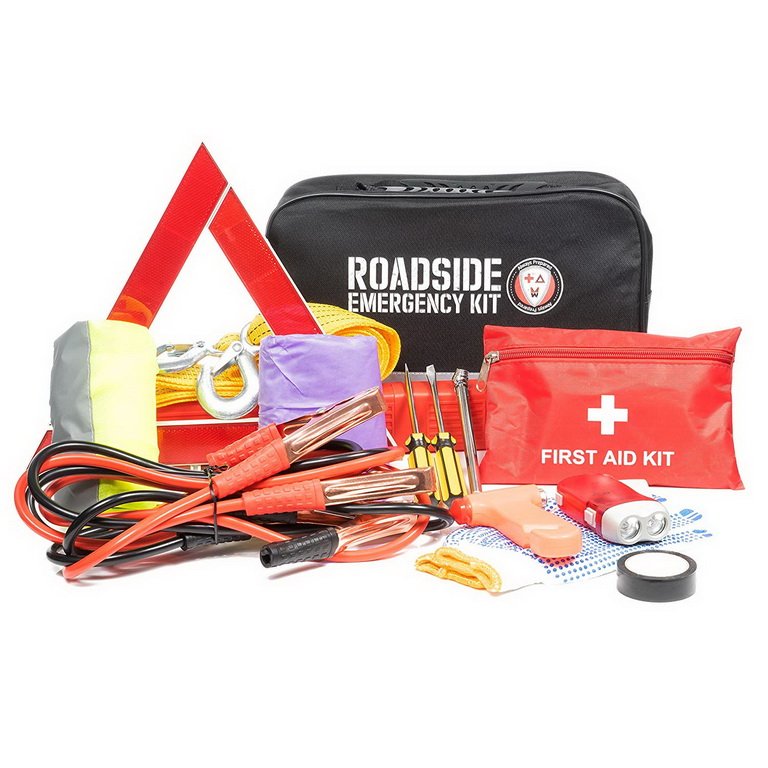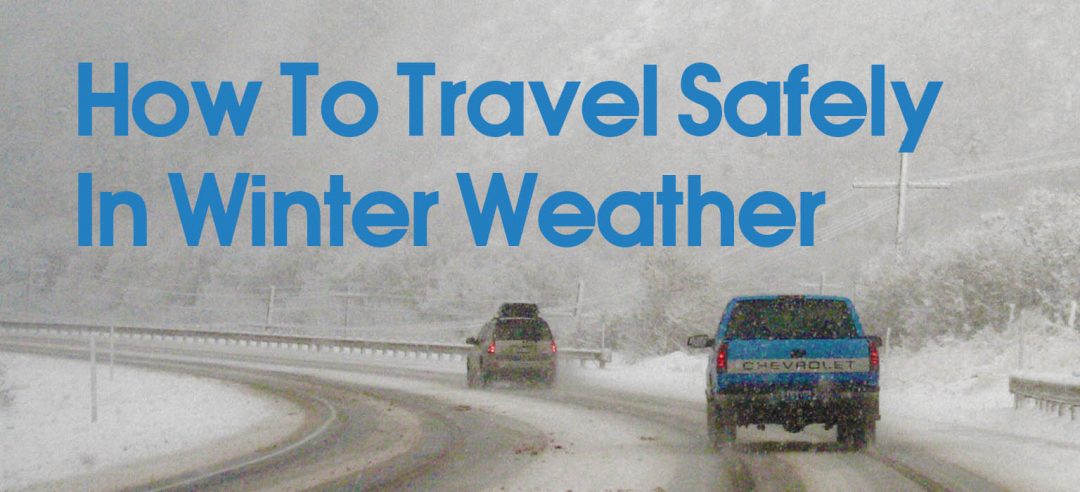How To Travel Safely In Winter Weather
Are you traveling “over the river and through the woods” to visit friends and family for the holidays? Do you need to regularly drive in winter’s challenging road conditions?
Either way, being prepared for winter driving conditions is essential to travel safely in winter. In addition to making sure your car is in good mechanical condition, you should also carry a winter emergency kit with you. You never know when conditions may suddenly worsen and you find yourself possibly stranded on the road. You’ll find a free downloadable Winter Emergency Checklist at the end of this article.
Preparing yourself and your car for winter isn’t difficult and is well worth any effort. Here is what you need to know to travel safely in winter weather.
Preparing for Winter Travel
Keep your gas tank at least half full to avoid gas line freeze-up. Keeping your gas tank at least half-full also reduces the possibility of running out of gas in extreme conditions.
Always check the weather AND the road conditions before you go. There are many popular weather sites and apps that can give you travel weather alerts. Every state has a website for road conditions, and most have phone numbers. You can find a list of US road condition websites here. Make sure you know the website for every state you will be traveling through. Check conditions before every trip out of your city.
I frequently need to road trip in the winter, and often through very remote stretches known for extreme weather. More than once, I have altered my travel plans based on weather and road condition reports. And more than once, I have heard nightmare stories from friends traveling similar routes who did not do the same. It is inconvenient to have to change your plans, but far less inconvenient than being stranded in a winter storm.
Practice emergency maneuvers BEFORE you need them and learn how your vehicle handles in the snow. Find an empty parking lot and learn how to recover from a skid, how your brakes respond on ice/snow/wet roads (FYI—stomp on anti-lock brakes, pump non-anti-lock brakes), and how your stability control system works. In addition, make sure you know the location of the hazard lights switch.
Make certain your tires are properly inflated. Check your tire’s tread now—before it’s time to travel. While there are many ways to check your tread depth, the Penny Test is one of the easiest and most popular. Simply insert a penny into your tire’s tread groove with Lincoln’s head upside down and facing you. If you can see all of Lincoln’s head, your tread depth is less than 2/32 inch and it’s time to replace your tires.
Replace windshield wipers if you have had them for more than six months.
Always check fluid levels before starting out. Be sure your radiator fluid, oil, transmission, and brake fluid are at appropriate levels and in good condition. Be sure to use cold-weather windshield washer fluid. Carry an extra gallon in your car when traveling. You use more than you may think in bad weather.
Before you leave the driveway or parking lot, take time to clear all the snow and ice off your car, including your windows, mirrors, lights, reflectors, hood, roof and trunk. Not cleaning your roof can lead to snow sliding down onto the hood of car while driving and blocking your vision. Snow blowing off your roof or trunk can also impair the vision of drivers behind you.
Drive with your headlights on, and be sure to keep them clean to improve both your ability to see and the ability for oncoming vehicles to see you.
Buy a quality pair of amber or yellow-tinted sunglasses for driving on foggy, cloudy or stormy days. These glasses enhance contrast and reduce glare. They also block blue light, improving sharpness and depth perception and help reduce eye fatigue. You can find my favorite amber glasses here.
Avoid Non-Essential Travel During Severe Weather Incidents. Do you really need to go? If the weather is bad (or even iffy) and you don’t absolutely have to go out, stay put. Even if you’re a confident and experienced winter driver, not everyone else on the road is. If you are not sure it is safe to go, don’t go.
On the Road
Make sure someone who is not traveling with you knows your travel plans. Especially when traveling long distances, be sure there is someone who will know where to look for you if you don’t arrive at your destination on time.
Slow Down. Stopping distances are longer on wet, snowy or icy roads. Give yourself extra following distance and give yourself extra time to reach your destination. Expect that travel times will be longer in winter weather.
Accelerate and decelerate slowly to avoid spinning your tires and to avoid skidding and sliding. Avoid making turns at higher speeds. Also think twice before pulling out in front of another vehicle. It also takes them more time to slow down.
Avoid stopping on an uphill if you can. It can be difficult to start moving again on an icy hill.
Use your seat belt every time you get into your vehicle. Yes, the old adage is true: seatbelts save lives. They also keep you in your seat (and behind the wheel) if go into a slide or skid, giving you a much better chance of regaining control of your vehicle and avoiding an accident.
Do not use cruise control when driving on any slippery surface (wet, ice, sand).
If you do not have a four-wheel-drive vehicle, purchase and carry tire chains or tire socks for traction. Traction devices are not interchangeable between cars. They are specific to your tire size, so make sure you know your tire size before purchasing them. Many states require that you have them with you in winter weather, whether or not you are using them.
If you are caught in bad weather on the road and end up stranded, stay IN your car and wait for help, unless you are in a traffic lane. Keep your seat belt on. Run your heater for 10 minutes each hour to help keep warm, making sure your exhaust pipe is clear of snow. Open a car window about an inch to keep fresh air flowing and avoid the danger of carbon monoxide buildup.
 Winter Travel Kit
Winter Travel Kit
In the winter, I always carry emergency supplies. In addition to a winter car care kit like this one, you need to also carry some personal supplies.
Here are some of my essentials:
- Blanket
- Small insulated cooler with water bottles, energy bars and hard candies.
- Flashlight and extra batteries.
- Portable cellphone charger and charging cable.
- Ice Scraper & Snow Brush
- Hand Warmers
- Coat, gloves & hat (I live in Colorado. I never leave the house in winter without a coat, even if it’s nice out. We all know here that the weather can change in an instant.)
- Small Portable Shovel
- Traction Mats (or Kitty Litter). I have a pair of these inexpensive IKEA doormats in my car. They work great for creating traction in an icy spot.
- Fully charged cellphone
Click here to instantly download your Winter Safe Travel Checklist.









